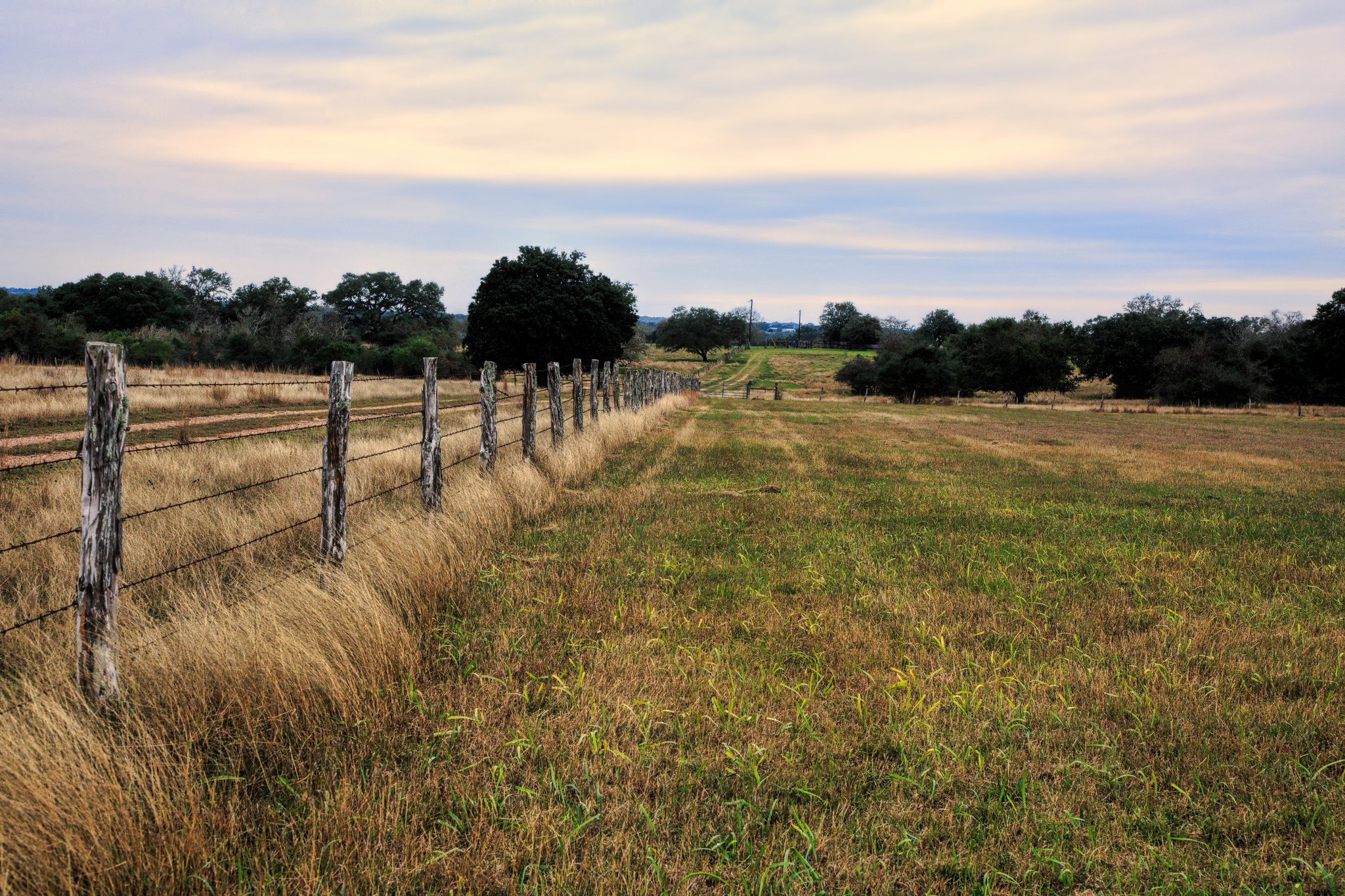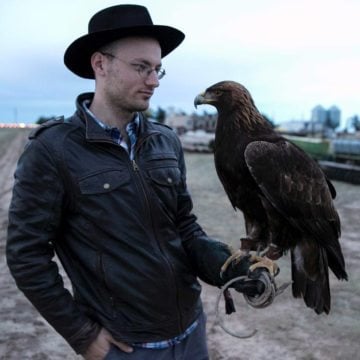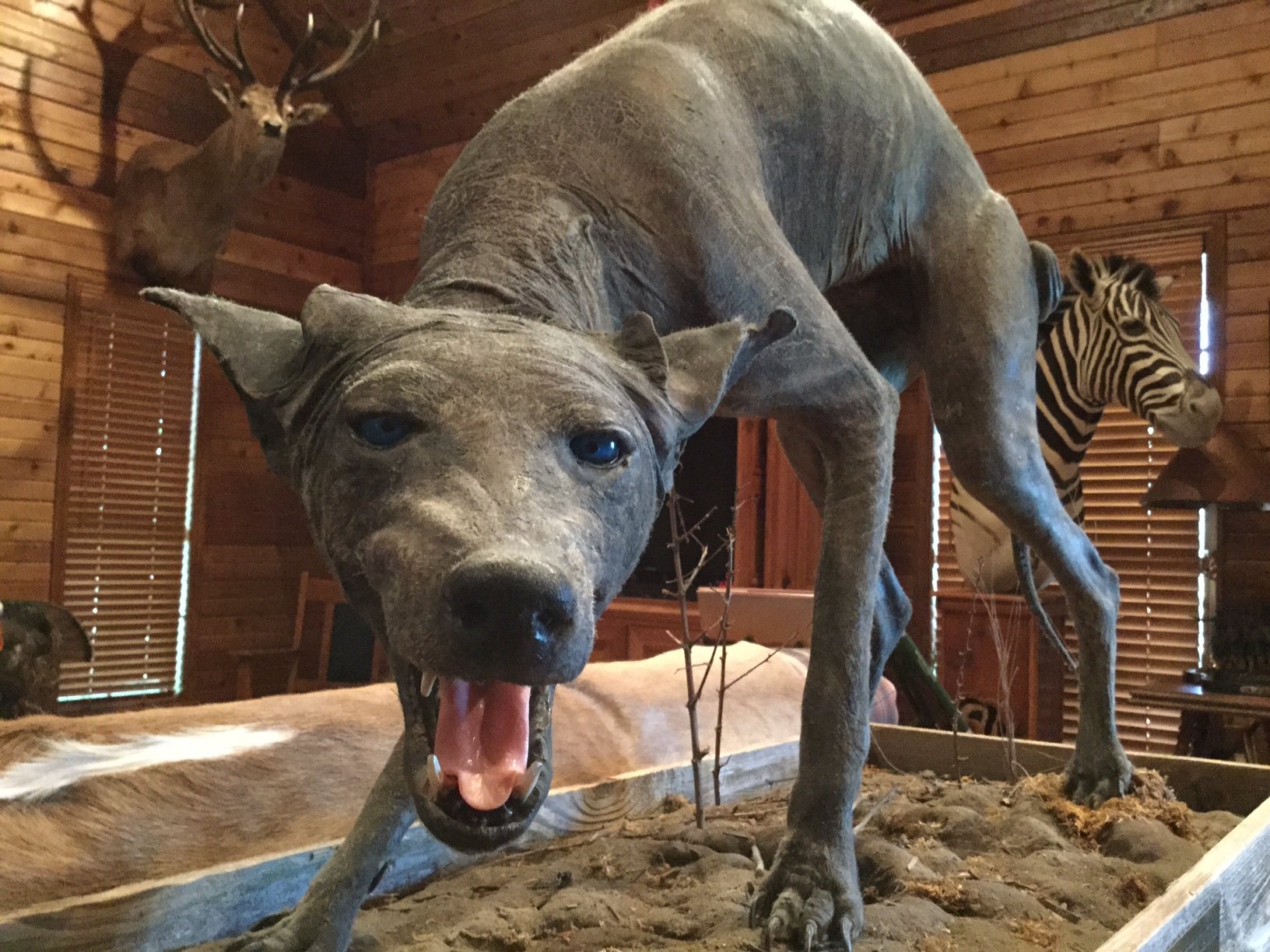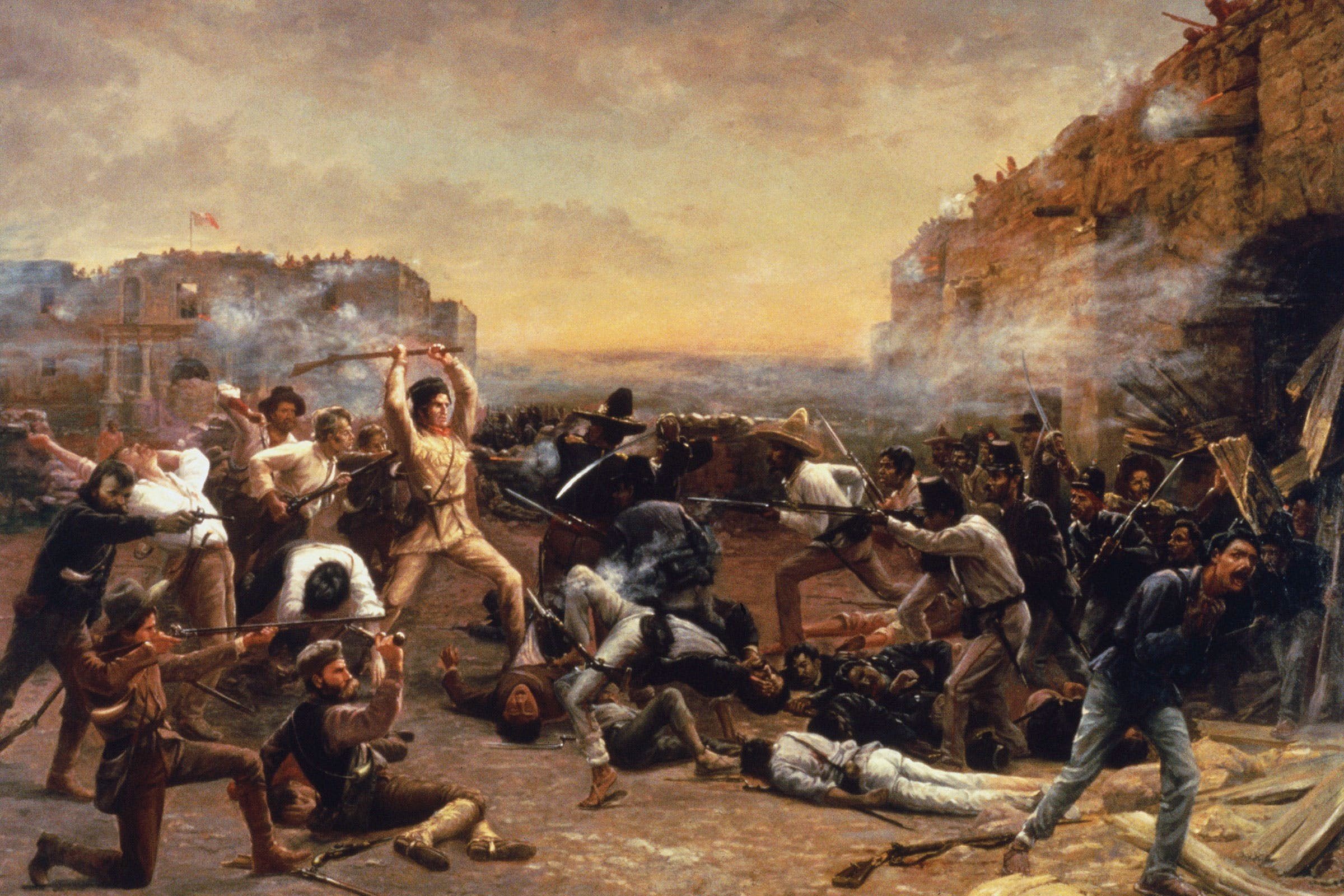
Chasing the Chupacabra
Texas chupacabras have a way of leaving behind bodies — or perhaps, bodies in Texas have a way of becoming chupacabras.

A version of this story ran in the December 2016 issue.
Texas chupacabras have a way of leaving behind bodies — or perhaps, bodies in Texas have a way of becoming chupacabras.
by Asher Elbein
October 27, 2016
The first time Phylis Canion saw the chupacabra, it was slipping through the pastures on her South Central Texas ranch in broad daylight. It was June 2007, and Canion, a naturopathic doctor and hunter, had just returned to Cuero from Africa. She’d seen some odd things there but nothing like this: a hairless canine figure with blue-gray flesh and bony limbs. Soon after, she and her husband found one of their chickens with its throat torn open, apparently drained of blood.
Over the next few days, the mystery predator struck again, leaving what appeared to be exsanguinated chickens across the ranch. Canion set up cameras hoping to catch it in the act. When that failed, she asked her neighbors to let her know if they saw, captured or killed it. In mid-July, a neighboring rancher called to say that one of the creatures had been hit by a car near his property. As Canion stood puzzling over the scrawny body, they got another call, about another strange carcass, this one closer to Canion’s ranch. She sped back in her car, and there it was; thin, hairless, bizarre.
Canion loaded it into her tractor and took it back to the ranch to photograph it. That brush with celebrity changed her life.
“We’ve done documentaries on National Geographic, History Channel, Discovery, Animal Planet. We’ve done about 13 shows overseas, we’ve done about 60 documentaries in the States,” Canion said. “Everybody wants to know more about the chupacabra.”

The chupacabra is among the most popular of the mystery beasts, an integral part of Texas folklore and a semi-regular guest star in sensational cable documentaries and credulous local news reports alike. For 10 years, legends of the blood-sucking monster have been a staple of rural life throughout the central part of the state, fueled by a succession of alleged carcasses, sightings and tall tales. According to Ben Radford, researcher with the Center for Skeptical Inquiry and author of Tracking the Chupacabra, Texas is a “chupacabra factory,” one of the foremost states associated with the vampire.
But the chupacabra wasn’t always a resident of the Lone Star State, and it didn’t always look like a dog. In the 21 years since the first supposed sightings of the creature, it has been a spine-backed alien, a winged kangaroo or a goblin, a predatory monkey or an unusually ambitious mongoose. Only one facet of the tale has remained constant: The chupacabra is out there in dark thickets and empty deserts, and it wants your livestock.
***
In the summer of 1995, a wave of livestock killings rocked the towns of rural Puerto Rico. The victims were found with wounds at their throats, seemingly empty of blood. Without a culprit, dark rumors spread throughout the island. Somebody, somewhere, gave the culprit a name: chupacabra, the goat sucker.
That August, as the panic was building to a fever pitch, a woman named Madelyne Tolentino reported a bizarre sighting outside her mother’s house in Canovanas. A long-limbed, earless creature with a spiny back appeared in the yard, she said, huge eyes staring through the window. Spooked by her scream, the thing leaped into the jungle.
In the wake of Tolentino’s account, aided by a sketch she later produced with local UFO researcher Jorge Martin, reports of bipedal, spiny and red-eyed creatures proliferated — over 200 in Puerto Rico alone. Some asserted that it was an escaped United States genetics experiment, or an alien collecting blood to spread AIDS. Its form fluctuated wildly — the number of spines on its back, whether it crept or leaped, or flew on bat wings, or floated through the air using psychokinesis. The first sighting in the continental United States took place a year later in Miami, with others appearing in Mexico, Brazil, Chile, Spain and Portugal. Within a few years, the chupacabra had transformed into a full-blown global phenomenon.
But the most radical change was yet to come. In 2000, Radford said, a Nicaraguan rancher shot and wounded something attacking his goats. A few days later a ranch hand found the carcass — a hairless, rangy-looking canid. It was the first time an actual body had been associated with the legend, and despite claims by the rancher and an overzealous media that it was a genetics experiment or a cross between a wolf and a crocodile, a cursory examination by anatomy specialists at the National Autonomous University of Nicaragua revealed that it was a common dog, likely stricken with mange. The rancher protested, accusing the university of a conspiracy. But a new model for the goat-sucker had emerged — a skulking, monstrous canine, much like the ones Canion would collect in Cuero.
***
Most cryptids — mystery animals of folklore — do not leave much in the way of physical evidence, surfacing instead in blurred photographs or ambiguous tracks. But Texas chupacabras have a way of leaving behind bodies — or perhaps, bodies in Texas have a way of becoming chupacabras. In 2004, 2007 and 2009, several chupacabra carcasses popped up in the central part of the state, many with warty skin and protruding teeth. All of them, including Canion’s, have been subjected to DNA testing, and the results have been the same: mangy, sickly coyotes or dogs.
This diagnosis doesn’t satisfy Canion. “I have now done DNA at five different universities. All of them came back identical. They do not match any animal in the archive,” she said.
This isn’t true: as reported in Radford’s book, Texas State University researchers found that the DNA was a complete match for a coyote. Other labs concurred. But Canion is undeterred. She’s kept the carcass and skull in her freezer and has a taxidermy mount of the the gnarled, ugly creature on display.
When pressed, Canion said she doesn’t know what her chupacabra is. She speculated that perhaps it’s a hybrid with a Mexican wolf, or an escapee from some dog breeder in the area. But she’s adamant that it isn’t a normal, mangy coyote. Perhaps, she said, the chupacabras are a type of coyote, but of a rare sort — naturally hairless, probably living underground, and very fond of blood.
No matter the creature’s appearance, the chupacabra’s believers fixate on its alleged thirst for blood, pointing to drained livestock as evidence of its existence. But most people aren’t clear on how to interpret forensic evidence. In dead animals, the drop in blood pressure leads to the blood pooling in the lowest portions of the body, Radford said. “If you stick it with a knife, it’s not gonna bleed unless you’ve flipped it over where the blood has seeped to. And people don’t do all of that.”
Even assuming the blood had been drained, the bodies that Canion describes don’t seem physically capable of doing it. There are real vampiric animals — mosquitos, lamprey eels, vampire bats — and blood is not an easy thing to make a living off of. It’s high in iron, and can cause a dangerous buildup in the bloodstream. Actual vampires, said Radford, “have structures in their mouths and digestive systems that would allow them to suck blood and digest it without injuring them.” The creatures that have been offered up as chupacabras may look bizarre, but they just don’t have the anatomy for vampirism.
What, then is killing the livestock? The answer is a disappointingly common one: coyotes and feral dogs. It’s commonly, and mistakenly, believed that feral dogs eagerly devour their prey. But domestic dogs often kill with a bite to the neck and then leave the carcass. By the time the kill is found, its blood has settled to the bottom — with a rip or puncture at the neck the only sign of attack.
***
The chupacabra is too thoroughly enmeshed in mass culture to be dismissed by mere physical evidence. And for believers, any attempt to explain away the creature is simply more proof that it exists.
“The history of the chupacabra and its origins are intertwined with conspiracy theory in a way that is unique in cryptozoology. That sort of keeps it afloat,” Radford said. Some speculate about genetics testing, escaped aliens or black helicopters collecting chupacabra eggs in the Atacama Desert. Others are simply convinced a species of ugly vampiric dog haunts rural Texas.
But these theories thrive on the fundamental conviction that experts are blinkered, unable to see the truth. Similar convictions are common with cryptids like Bigfoot or Nessie. But unlike those creatures, the chupacabra did not exist prior to 1995; it has no folkloric predecessors to fall back on. The figure bears a whiff of the uncanny — seldom seen, constantly shifting, known only by its victims. The chupacabra is a tautology: it exists because we know that it must exist. Why else would we be talking about it?
All of which lends a final absurd twist to the creature’s beginnings. For the likely origins of the chupacabra lie not in the folk traditions of Puerto Rico or in sightings of mangy coyotes, but in Hollywood. On July 7, 1995 — a month before the Tolentino sighting that sent the chupacabra rocketing to stardom — the sci-fi thriller Species was released across the United States and Puerto Rico. The film featured a seductive, organ-draining, human-alien hybrid designed by Alien concept artist H.R. Giger. The leaping creature had a spined back, lanky proportions and huge eyes. According to an interview with Tolentino included in Radford’s Tracking the Chupacabra, she had seen — and enjoyed — the film.
[Featured image of DeWitt County ranch land by Scott Sanford]



